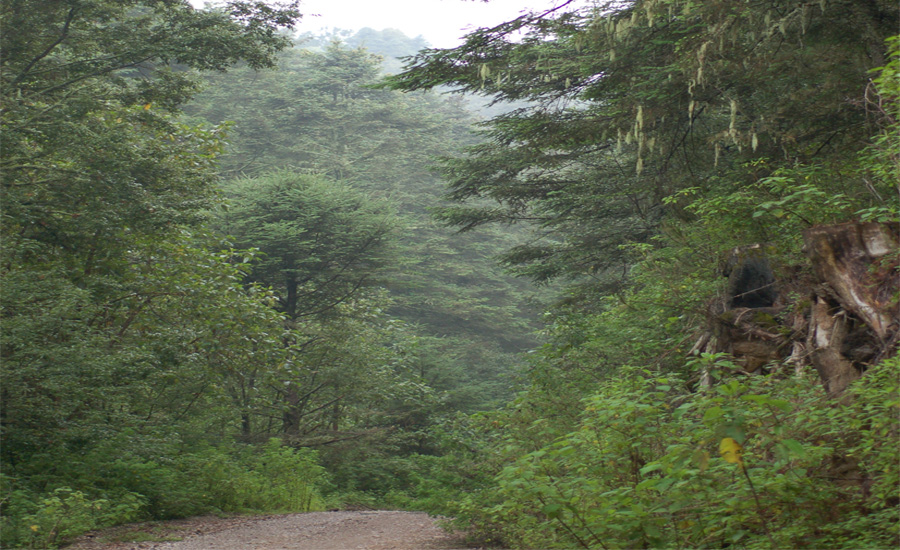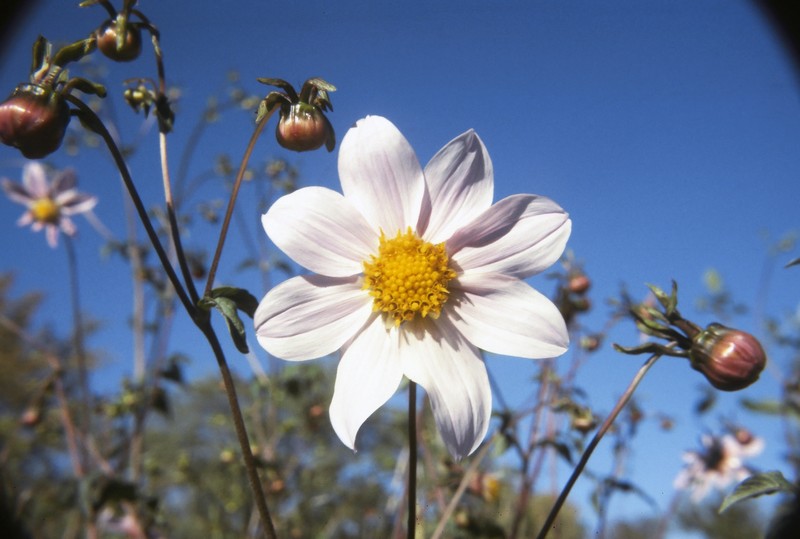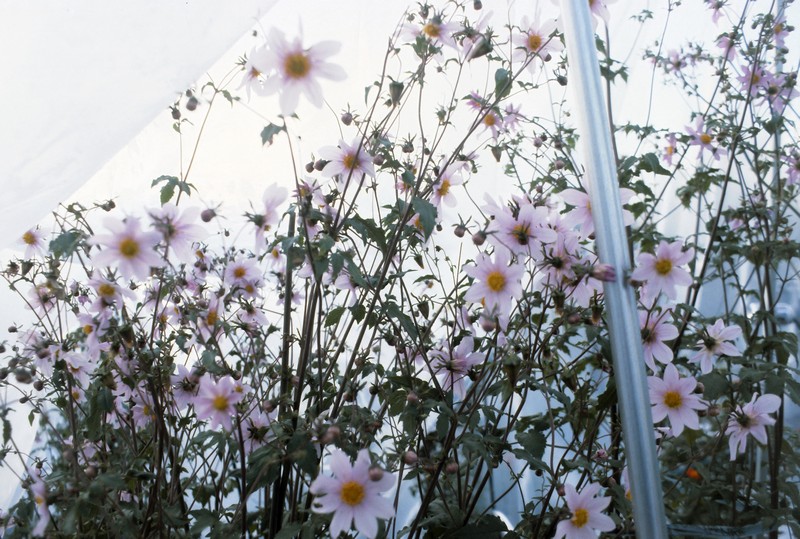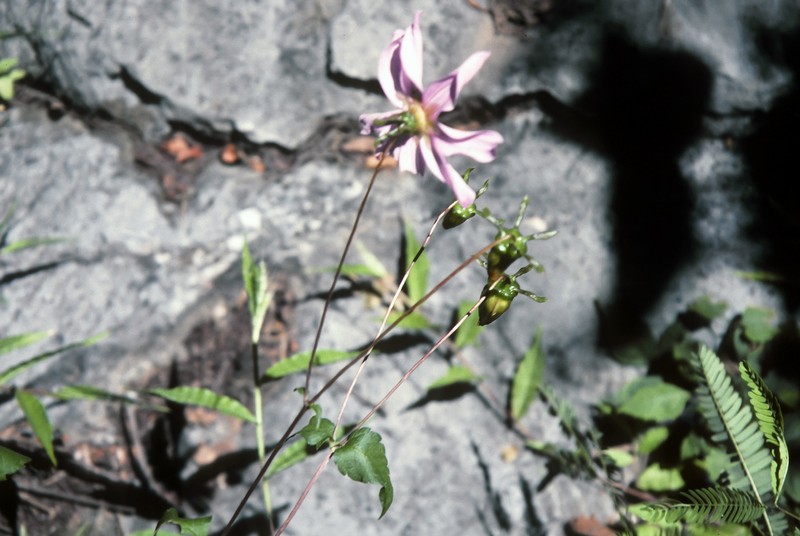
 Cultivated plant of D. parvibracteata in flower and with buds in various stages of development.
Cultivated plant of D. parvibracteata in flower and with buds in various stages of development.This species was discovered during a 1995 collecting trip to eastern and south-central Mexico (Saar & Sørensen, 2000). Two populations were located in the state of Guerrero, north of Tasco, at an elevation of 1,820 meters (about 5,970 feet). Plants from the holotype population were growing from soil trapped among volcanic rocks and rubble in sun, partial shade, and filtered light in a zone of fan palm, Buddleia, Acacia, and Quercus. (Buddleia is a genus that includes butterfly bush, Acacia includes century plant, and Quercus is the genus of oaks.) The second population was growing among thickets along a fencerow. A third population was tentatively identified about one km (0.6 mi.) south of the original population, but its position high on a ledge prevented collection and a positive identification.
 D. parvibracteata under Quonset in Illinois research plot.
D. parvibracteata under Quonset in Illinois research plot.Dahlia parvibracteata is an erect, several-stemmed, herbaceous perennial from tuberous rootstock. It is 0.8 to 1.5 m (2.6-4.9’) in height, generally taller with increasing sun exposure. Stems are reddish but variable and short pubescent to slightly glaucous. The median leaves are 17.5 to 28 cm (6.9-11”) long including petioles, twice compound with stipels frequently at the first rachis node, becoming once compound without stipels to simple at the base of the flowering portion. Flowers are numerous on terminal or axillary stems, either borne singly on long peduncles or on short-branching naked stems held above the foliage. The capitulum (flower head) is 5-8 cm (2.0-3.1”) in diameter, including the rays. Disc florets are fertile and yellow; ray florets are sterile with 7-8 (-9) ligules colored light lavender with darker veins on the lower surface. The 7-8 inner involucral bracts (phyllaries) are 9-16 mm (0.35-0.63”) long and 4-7.5 mm (0.16-0.3”) wide. The 5-6 outer involucral bracts are narrowly spatulate to oblong-lanceolate, 9-14 mm (0.35-0.55”) long, and only 2-3 mm (0.08-0.12”) wide. These outer bracts are reflexed at anthesis and project from a flat and somewhat disk-like capitulum base. Flowering (in 1995) occurred during August through September in its native habitat (Saar & Sørensen, 2000). Flowering of plants in research plots in northern Illinois and western Kentucky was delayed until the last few days of September or early October, presumably due to the longer daylengths in spring and early summer at these higher latitudes (DES, personal observations).
 D. parvibracteata under Quonset in Illinois research plot.
D. parvibracteata under Quonset in Illinois research plot.The specific epithet, parvibracteata, was chosen to draw attention to the small narrow outer involucral bracts, which twist somewhat, begin to bend outward from the inner bracts, and elongate beyond the flower bud prior to opening. The developing buds take on an almost spider-like appearance (e.g., the spider-dahlia; see photos).
References:
Saar, D.E. and P.D. Sørensen. 2000. Dahlia parvibracteata (Asteraceae): new species from Guerrero, Mexico. Novon 10: 407-410.